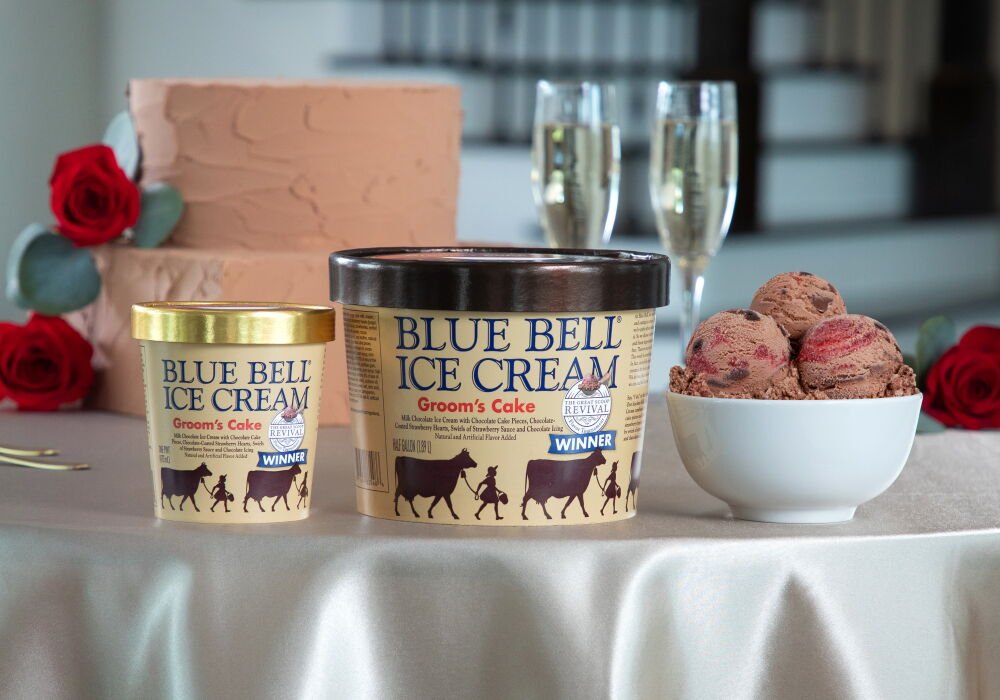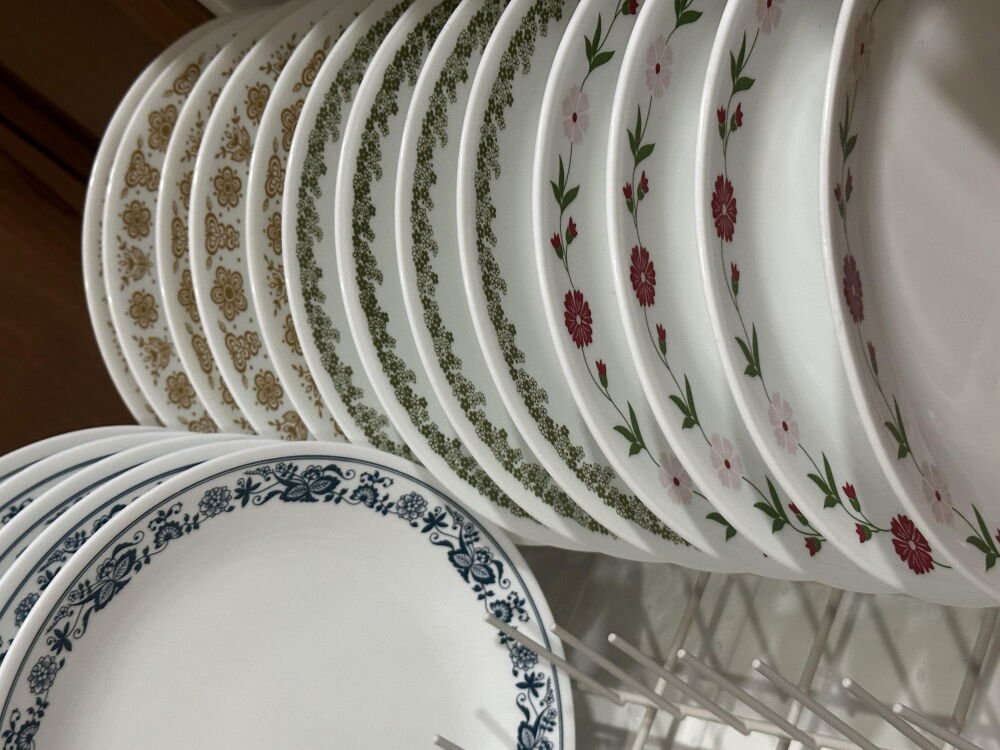Key Points
- Butterfly Gold and Old Town Blue, popular 1970s and 1980s Corelle dish designs, have been retired, according to research.
- These patterns may have been discontinued because to changing customer trends, increased production costs, and safety concerns, notably lead in pre-2005 designs.
- Collectors can discover discontinued Corelle patterns on eBay, Etsy, Amazon, flea markets, and antique stores.
Corelle, created by Corning Glass Works in 1970, is known for its durability, lightweight construction, and timeless style. Corelle adjusted their product line throughout the years to meet changing tastes and safety norms. This page explores defunct Corelle dish designs, their history, why they were discontinued, and where collectors and nostalgic users might find them.
Evolution of Corelle Dishware
Corelle’s revolutionary Vitrelle glass, which is durable and thin, transformed cookware. This invention made Corelle dishes lightweight and chip-resistant. Corelle became famous when American families adopted these traits. Corelle introduced several designs in the 1970s and 1980s to represent cultural and design trends.
Historical Setting
Corelle emerged during a time of household transition in America. Design choices were colorful and even adventurous in the 1970s. Butterfly Gold and Spring Blossom Green dinnerware reflected the era’s artistic sensibilities and were useful. Designs were bold, colorful, and frequently inspired by nature, reflecting the social and cultural climate.
Taste changed in succeeding decades. Modern, minimalist styles replaced 70s eclecticism and ornate ornamentation. As a result, Corelle added new designs that fit current trends and retired old ones.
Legacy of Signature Patterns
Several 1970s and 1980s tableware patterns are iconic. Notable examples are:
| Pattern Name | Introduction Year | Discontinuation Year | Notable Features |
|---|---|---|---|
| Butterfly Gold | 1970 | 2002 | Golden butterflies and floral accents, nostalgic appeal |
| Old Town Blue | 1974 | 2017 | Classic blue and white design inspired by traditional motifs |
| Spring Blossom Green (Crazy Daisy) | 1972 | 1986 | Lively green flowers, earning the nickname “Crazy Daisy” |
| Indian Summer | 1977 | 1986 | Rustic, autumnal design evoking a warm, natural palette |
| Woodland Brown | 1978 | 1985 | Earthy tones with a forest-like motif, highly sought after |
These designs, along with Wildflower, Meadow, and Blue Heather, are more than dinnerware—they’re relics. Many people associate these patterns with family gatherings and home-cooked meals, making them more than simply useful tools but also cultural artifacts.
Why Did Corelle Patterns End?
The cessation of Corelle dish patterns is due to design evolution, manufacturing issues, and health and safety restrictions.
Consumer Tastes Change
Cultural developments, economic trends, and design technologies change consumer desires. Buyers liked Corelle’s lavish, nature-inspired 70s designs in the early years. Many of these elaborate designs lost popularity as the market shifted toward sleeker, more contemporary styles. Companies must innovate constantly, and new designs often replace old ones.
Production costs and tech advances
Certain pattern fabrication got less cost-effective over time. Specialized inks and labor-intensive production methods raised production costs for some designs. Modern printing and manufacturing technology make product updates easier. Streamlining balances quality, affordability, and design trends.
Safety: The Main Concern
Safety concerns, especially lead in decorative paints, drove the discontinuation of earlier Corelle designs. Some beloved motifs were made with lead-containing decorative paints before 2005. Lead leaching risks arise when plates are microwaved or used with hot meals.
Modern FDA restrictions ban lead in dishware, thus Corelle has modified its production techniques. As a result, several historical designs have been withdrawn and recommended for decoration rather than daily usage. Lead exposure poses health dangers, thus manufacturers and customers have prioritized safety by phasing out designs with worn or cracked glazing.
Keep and Use Discontinued Corelle Patterns
Collectors and aficionados still want several Corelle dish patterns after their discontinuance. These goods are valued for their aesthetic appeal and nostalgia in auctions, online markets, and antique stores.
Locating Discontinued Patterns
Collectors and antique Corelle enthusiasts can buy these items in many ways:
- eBay, Etsy, and Amazon sell several antique Corelle designs. Complete sets or individual pieces can be found with extensive condition and historical information.
- Websites for vintage dishware enthusiasts offer catalogs and replacement pieces for discontinued patterns. These sites give fans specific information on each design, making authenticity verification easy.
- Flea markets, yard sales, and antique stores are great places to find old Corelle dishware. Many collectors like the chase, finding a unique pattern like Woodland Brown or a full Butterfly Gold set.
Tips for Collectors
Expert advice for buying or collecting discontinued Corelle patterns:
- Check Authenticity: With the rise of replicas, historic pieces must be checked for authenticity. Markings, color tones, and design elements should match the original pattern.
- Assess Condition: Condition frequently determines a piece’s worth. Check for chips, cracks, or wear that might diminish its aesthetic value and increase lead leaching.
- Understand the Risks: Use old Corelle dishes safely. Use pre-2005 dishes for decorating. To be sure vintage dishware you use for meals is safe, get lead testing kits.
- Join Collector Communities: Vintage dishware lovers frequent online and local forums. These communities may advise, reveal trends, and verify artifacts.
A Closer Look at Popular Discontinued Patterns
Butterfly Gold
Butterfly Gold is a classic Corelle design. This style, introduced in 1970 and withdrawn in 2002, featured beautiful golden butterfly and floral patterns. Its nostalgic charm kept it in kitchens and dining rooms for decades. Butterfly Gold is prized by collectors and represents classic elegance.
Old Town Blue
Old Town Blue with its characteristic blue and white pattern were produced from 1974 until 2017. This pattern combined classic elegance with modern utility, inspired by porcelain motifs. It was temporarily revived as True Blue, but vintage lovers prefer the original.
Crazy Daisy (Spring Blossom Green)
Spring Blossom Green, known as Crazy Daisy, was launched in 1972 and was recognized for its vibrant green flower pattern. The design, discontinued in 1986, was named for its fanciful, almost surprising flower arrangement. This fun design embodies its age and remains a favorite for individuals who like color on their tables.
Indian Summer
Indian Summer also fit late 1970s rustic and natural tendencies. This 1977–1986 pattern reflected autumn’s warmth and richness with earthy tones and an organic, welcoming style. Collectors who respect its link to a certain design moment are more interested in it since its absence from the market.

Extra Patterns
Other abandoned designs like Wildflower, Meadow, Blue Heather, and Woodland Brown are charming. Some of these patterns have unknown termination dates, yet their unusual designs remain popular. These designs’ floral, natural, and abstract aspects make them memorable long after manufacture.
Nostalgia and Safety Intersection
Nostalgia drives obsession with discontinued Corelle dish designs. People remember family gatherings, holiday dinners, and regular meals on these plates. Despite its beauty and sentimentality, nostalgia must be balanced with safety.
Implications of Lead
Many pre-2005 decorative paints contain lead, which is concerning. Children and pregnant women are more vulnerable to lead poisoning. Vintage antiques with broken or damaged glazes might leak lead into meals. Thus, experts advise utilizing these things as ornamental pieces rather as microwave or hot meal plates.
Modern Guidelines
Modern dishware, including newer Corelle designs, meets strict regulatory safety criteria. To maintain the vintage style without compromising health, mix old items with new, lead-free designs. Vintage designs might be displayed in a curio cabinet while current ones are utilized daily.
Vintage Corelle Maintenance Tips
For the life and safety of your discontinued Corelle dinnerware, follow these guidelines:
- Regular Inspection: Check historic dishes for wear, chipping, and cracking. Even minor flaws can contaminate.
- Gently clean with mild cleaners and avoid harsh scrubbers to avoid surface damage. For older objects, hand washing is advised over dishwasher cleaning.
- Lead Testing: If your historic items are used to serve food, invest in lead testing equipment to assess their safety.
- Display vs. Use: Determine which pieces are excellent for display and which may be safely utilized. Keeping old Corelle on display preserves their beauty and keeps them in your collection.
Corelle Collectibles’ Future
The withdrawal of cherished designs has boosted vintage Corelle sales. Collectors and enthusiasts search for rare items to complete their collections or recall a bygone age. The secondary market for these artifacts is strong, including online and in-person sales.
Collection as Investment
Many buy discontinued Corelle designs for nostalgia and investment. Unique patterns, especially pure ones, tend to gain in value. These artworks appeal as useful and collectible art due to their originality and historical relevance.
Preserving History
All discontinued Corelle patterns are pieces of design history. From vibrant, exuberant 1970s patterns to more somber, contemporary designs of subsequent years, these plates reflect changing times and tastes. Fans are safeguarding gastronomic and cultural legacy by saving and collecting these patterns.
Conclusion
Corelle discontinued dish designs are unique in antique tableware. These patterns are popular with collectors and sentimental customers due of their timeless appeal and recollections. Each piece has a story beyond its functional utility, whether Butterfly Gold is brilliant or Old Town Blue is traditional.
Safety considerations, especially lead in pre-2005 designs, require cautious handling and selective use, yet these patterns are beautiful and historically significant. As technology and consumer tastes change, antique Corelle will undoubtedly remain popular because to a profound respect for timeless design and the story in every dish.
The tale of discontinued Corelle dish designs shows how design can captivate our hearts and minds in a society that values form and function. These plates are artifacts of a cultural past, treasured for their beauty and the memories they preserve for collectors and casual users.
FAQ
Which discontinued Corelle designs are most popular?
Butterfly Gold, Old Town Blue, Spring Blossom Green (Crazy Daisy), Indian Summer, and Woodland Brown are discontinued favorites. These designs have diverse styles and invoke nostalgia for different times.
Why were so many Corelle patterns discontinued?
Consumer tastes, the necessity for current designs, and production cost savings caused several Corelle patterns to be discontinued. Safety concerns—particularly lead in pre-2005 decorative paints—also mattered.
Can old Corelle plates be used for regular meals?
Vintage Corelle pieces are revered for their beauty and nostalgia, however many pre-2005 designs may contain lead in the paint. Therefore, use these dishes mostly for decoration or test them for lead before using them with meals.
Are discontinued Corelle dish patterns available?
Corelle discontinued patterns can be found on eBay, Etsy, Amazon, flea markets, yard sales, antique stores, and vintage dishware websites.
Are discontinued Corelle designs worth buying?
Many collectors consider discontinued Corelle designs a smart purchase. Due to their historical relevance and appeal, rare and well-maintained items may appreciate.
How do I maintain my old Corelle dishes?
To keep antique Corelle, check for damage or chipping, clean gently, and test for lead if using them with food. Keeping these objects on display may preserve them.
This extensive look into discontinued Corelle dish designs highlights its unique combination of nostalgia, design innovation, and safety. These patterns reflect the essence of a pivotal moment in American design history, whether you are a collector or just remember family meals around a beautifully set table.




